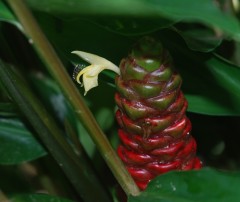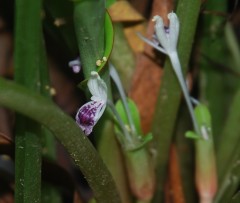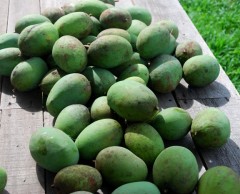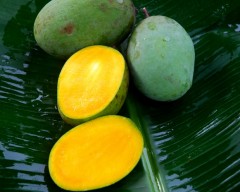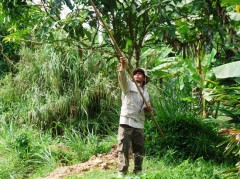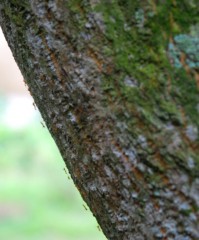Aug 17, 2010
Kacip Fatimah Propagation
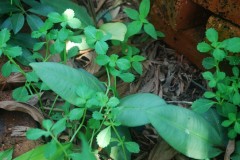


20:06 Posted in Useful Plants | Permalink | Comments (0) | Tags: kacip fatimah, labisia pumila, leave cuttings, petiole cuttings, propagation by leaf cutting
Visitors to the Farm - Head of Vet Services, Pahang
The new Head of Veterinary Services Department, Pahang, Dr. Muhammad Safaruddin and his assistant, Dr. Rohaya, came on a surprise visit to the farm today.


19:55 Posted in Visitors | Permalink | Comments (0) | Tags: dr. muhammad safaruddin, pengarah, dvs pahang, jabatan veterinar pahang
Jul 26, 2010
Useful Plants At The Farm- Mulberry Tree
The mulberry tree (morus alba; pokok daun ulat sutera; chinese: sang shu ) has a long history ( 3000 years ) of medicinal use in China, Korea and Japan.
Sinseh Soon from Raub came to the farm for a 'look-see' and told us about the medicinal uses of the tree, under which he was resting.

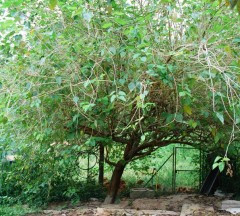

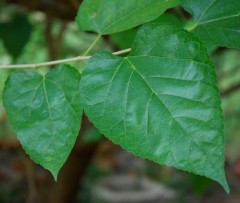

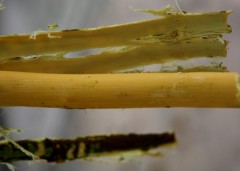

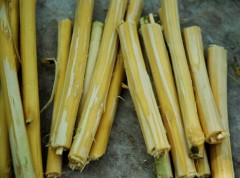

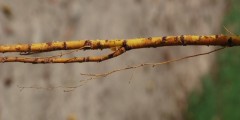
12:03 Posted in Useful Plants | Permalink | Comments (2) | Tags: mulberry, morus alba, goji, jujube, red dates, sinus, rheumatism
Jul 17, 2010
Malaysia's Best
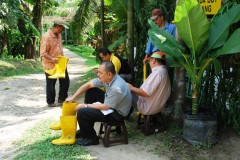

09:23 Posted in Visitors | Permalink | Comments (2) | Tags: fama, 1 malaysia best, quality standards, durians
Jul 16, 2010
Emerald Doves came visiting
There was a flutter and a flash of iridescent green darting up from the ground towards some thick low branches. I thought I saw a pair of pigeon.
I approached the branches slowly and they darted off again to a clump of kantan and then were gone.
I knew then that they were a pair of punai tanah or Emerald Dove (chalcophaps indica indica). They were flighty, as are most first timers (birds I mean) to the farm. Nonetheless it is great that this pair of young adults have come down from the rainforest to the farm. Hopefully they will nest here.
Emerald doves in Malaysia are shy and flighty, possibly due to over hunting. It is an honour that this pair feel secure enough to visit us.
Here's a photo I downloaded from Lip Kee's photostream at Flickr.
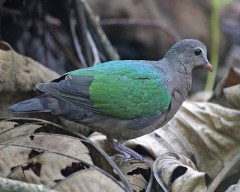
Readers, should you decide to use this picture, please accept the terms of use at Lip Kee's page at Flickr. It is the right thing to do (I have found my pics and writings in odd places without attribution and it is annoying to say the least).
The incident with the pigeons happened so fast, I did not have the chance to get my camera. In any event without a good telephoto lens I would not be able to capture them. Time to invest in a 400mm lens at least, I suppose. That will set me back a few thousand ringgit. Maybe next year.
11:14 Posted in Blog | Permalink | Comments (0) | Tags: chalcophaps indica indica, emerald dove, wild pigeon, punai, punai tanah
Jul 15, 2010
Fungal and Bacterial Preventive, Naturally.
This is what we use as a preventive, especially during rainy weather against bacterial and fungal attacks on our plants (leaves and stems, not roots);
Take 500 grams gelenggang ( cassia alata ) leaves and 400 grams lengkuas rhizomes ( alpinia galanga ) and pound them.
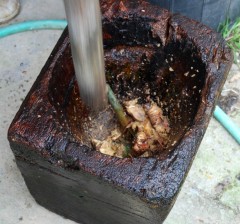


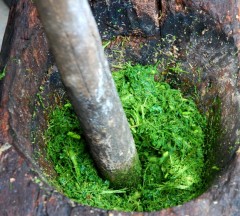

We find the spray effective as a prevention against most fungal and bacterial infections on stems and leaves. Spray regularly but lightly (sparingly) twice a week. During bad weather or where there are early signs of disease, spray once a day sparingly (lightly) until disease is arrested. It is not effective if disease is well on its way.
18:58 Posted in Useful Plants | Permalink | Comments (0) | Tags: anti-bacterial plants, anti-fungal plants, alpinia galanga, cassia alata, gelenggang, lengkuas, useful plants
Jun 28, 2010
Flowers of the ginger family at the farm
Wild gingers have lovely flowers seldom seen.
Some of the wild gingers planted at our farm are flowering (click on pics for enlarged image).
11:29 Posted in Blog | Permalink | Comments (3) | Tags: boesenbergia rotunda, black turmeric, curcuma longa, kaempferia galangal var, zingziber zerumbet, kunyit hitam, cekur, kunyit putih, lempoyang
Jun 15, 2010
Sanctuary for butterflies
The Raja Brooke's Birdwings (Trogonoptera Brookiana) are gone from the waterfall. What a difference a week makes. The clearing works at the side of the falls and further up have destroyed their habitat. All the aristolochia foveolata, their host plant, have been slashed as the undergrowth was cleared.
This is a photo we took of them in September last year at the banks of the falls (the smaller one is a Common Jay) :
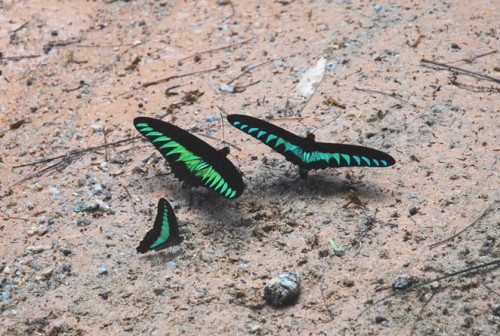
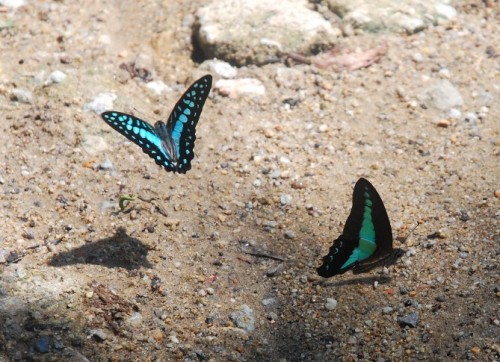
19:13 Posted in Blog | Permalink | Comments (0) | Tags: raja brooke's, birdwing butterflies, common jay, trogonoptera brookiana, aristolochia foveolata
Jun 10, 2010
Uncertainty...
The low clouds made me contemplative, sitting by that waterfall. Reminiscing that long train ride to Brockenhurst on a damp autumn day. And alone in a stark rented apartment a different life ago, overlooking Tower Bridge; anxiously waiting.... And having cheap ice cream for lunch and dinner.
Then there was a barely perceptible change in the air. An urgency in the breeze; a quickening in the mood of the birds that surrounded me and the Raja Brookes all suddenly took off.
Then a roar, and a wall of water came towards me...


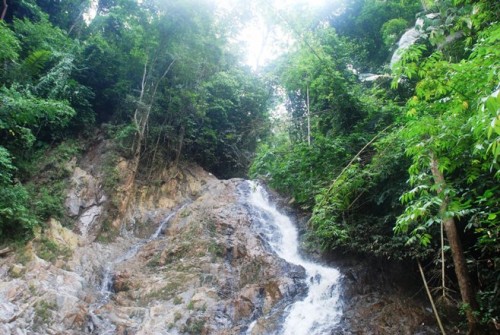
15:19 Posted in Blog | Permalink | Comments (2) | Tags: flash floods, runoffs, soil infiltration, clearing forests
Jun 07, 2010
Nature Farming - Kuini
You don't find many kuini (mangifera odorata) in the market. Part of the reason is that the tree is not very productive as far as commercial farmers are concerned. For the same amount of fertiliser, pesticides and labour, the production is significantly less for the kuini tree as compared to other commercial hybrid mangoes.
Kuini trees in a row
Pak Din plucking the fruits
Another reason is that the weevils love kuini and losses can be high, unless one really go the 'overkill' path and spray pesticides copiously.
At DQ Farm we use nature to help us. And nature works 24/7 without rest.
Vicious red ants swarming entire trees from root to fruit, keeping the fruits free from weevils and other insects.
Red ants swarming a fallen fruit protecting it from insects:
buah macang buah kuini
masak sebiji dalam daun
mengapa begini hatiku ini
habis bulan berganti tahun
My translation:
the kuini the machang
fold one in leaves to ripen
this heart of mine, oh what's hidden
a year passes with each fading month
10:42 Posted in Nature Farming | Permalink | Comments (3) | Tags: nature farming, organic farming, kuini, mango farming, mangifera odorata









